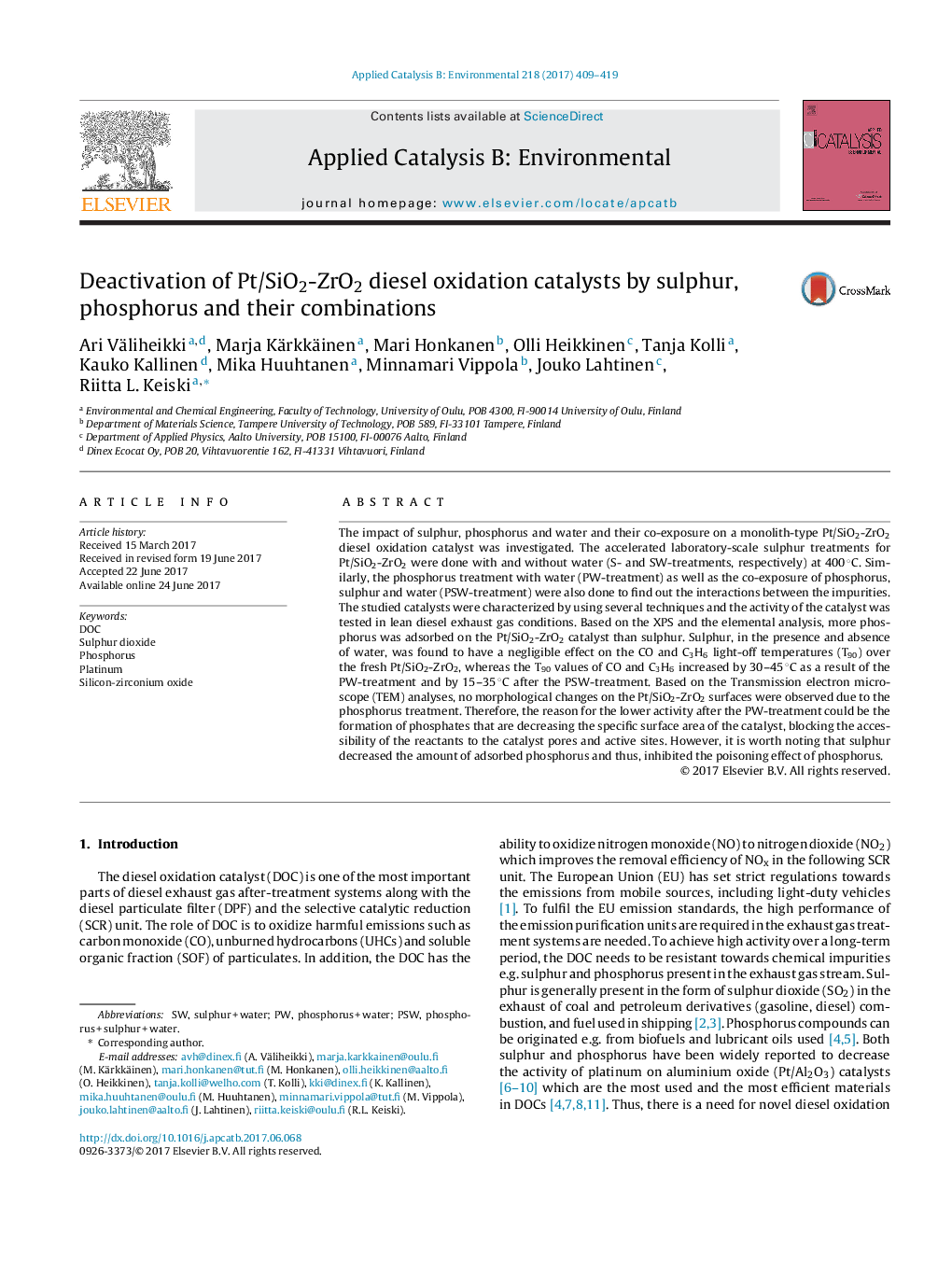| کد مقاله | کد نشریه | سال انتشار | مقاله انگلیسی | نسخه تمام متن |
|---|---|---|---|---|
| 6453766 | 1418802 | 2017 | 11 صفحه PDF | دانلود رایگان |

- Pt/SiO2-ZrO2 catalyst was found to be resistant to sulphur poisoning.
- More phosphorus than sulphur was detected on Pt/SiO2-ZrO2 after the PSW treatments.
- Phosphorus decreased activity and specific surface area of Pt/SiO2-ZrO2.
- Phosphorus was adsorbed on the catalyst surface as phosphates.
- Sulphur hindered the poisoning effect of phosphorus.
The impact of sulphur, phosphorus and water and their co-exposure on a monolith-type Pt/SiO2-ZrO2 diesel oxidation catalyst was investigated. The accelerated laboratory-scale sulphur treatments for Pt/SiO2-ZrO2 were done with and without water (S- and SW-treatments, respectively) at 400 °C. Similarly, the phosphorus treatment with water (PW-treatment) as well as the co-exposure of phosphorus, sulphur and water (PSW-treatment) were also done to find out the interactions between the impurities. The studied catalysts were characterized by using several techniques and the activity of the catalyst was tested in lean diesel exhaust gas conditions. Based on the XPS and the elemental analysis, more phosphorus was adsorbed on the Pt/SiO2-ZrO2 catalyst than sulphur. Sulphur, in the presence and absence of water, was found to have a negligible effect on the CO and C3H6 light-off temperatures (T90) over the fresh Pt/SiO2-ZrO2, whereas the T90 values of CO and C3H6 increased by 30-45 °C as a result of the PW-treatment and by 15-35 °C after the PSW-treatment. Based on the Transmission electron microscope (TEM) analyses, no morphological changes on the Pt/SiO2-ZrO2 surfaces were observed due to the phosphorus treatment. Therefore, the reason for the lower activity after the PW-treatment could be the formation of phosphates that are decreasing the specific surface area of the catalyst, blocking the accessibility of the reactants to the catalyst pores and active sites. However, it is worth noting that sulphur decreased the amount of adsorbed phosphorus and thus, inhibited the poisoning effect of phosphorus.
The CO and C3H6 light-off temperatures (T90) over fresh, SW-, PW-, and PSW-treated Pt/SiO2-ZrO2 catalysts.116
Journal: Applied Catalysis B: Environmental - Volume 218, 5 December 2017, Pages 409-419